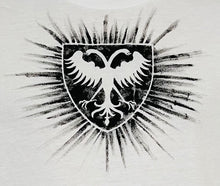The Holy Roman Empire, or Sacrum Romanum Imperium in Latin, was a political entity spanning hundreds of years and encompassing varying amounts of territory in Western and Central Europe. Its origins date back to the reign of Charlemagne, founder of the Carolingian Empire, who was crowned emperor in the year 800 AD. His title was “Charles, most serene Augustus, crowned by God, great and pacific emperor, governing the Roman empire.” This was later shortened to the more succinct Holy Roman Emperor. Though having the word holy as part of the title, the empire soon fell under fire from the papacy, most notably in the 11th century with the Investiture Controversy. Pope Gregory VII (1073-1085) claimed that only he could appoint and give symbols to bishops and abbots, whereas Emperor Henry IV claimed he could as well. Whilst ostensibly about the investiture of bishoprics and abbacies, the real conflict arose over the relative powers of the papacy and the Holy Roman Emperor. Over the centuries since its inception, the empire fell into numerous families, from the Carolingians, to the Ottonians, to the Hohenstaufens, and many more. The realm finally met its conclusion under the rule of Hapsburg Francis II. At the time, the empire had fallen much since its height and was merely a name grouping a few German states together.
The escutcheon of the Holy Roman Empire is the “Reichsadlerl” or Imperial Eagle. The symbol comes from the traditional Roman Eagle standard, the Aquila, traditionally carried by a designated legionnaire called the aquilifer.




